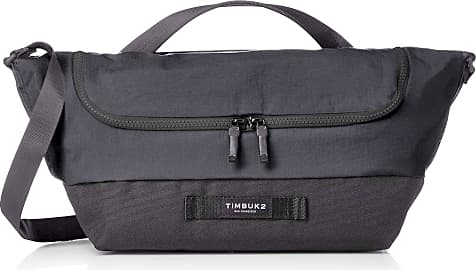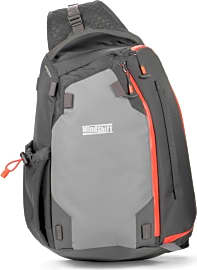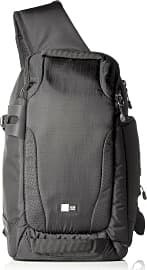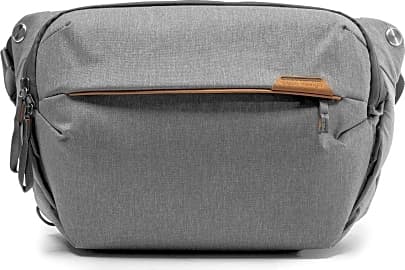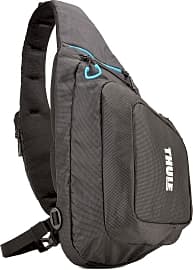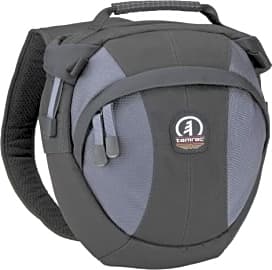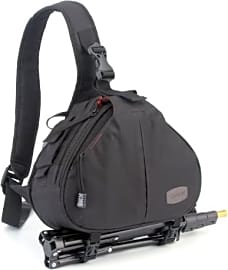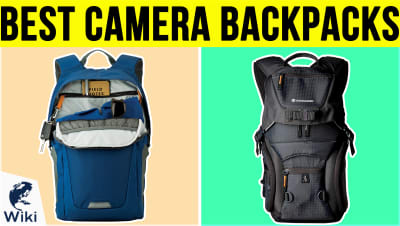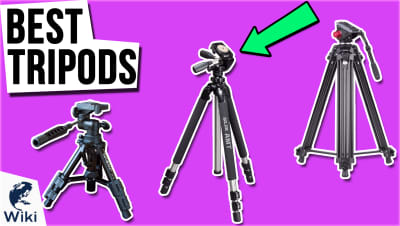The 10 Best Camera Sling Bags

This wiki has been updated 36 times since it was first published in April of 2016. Perfect for overseas travel, heading out to capture some wildlife, or just for roaming around the city, these sling bags offer good protection for all of your gear, along with quick access to your DSLR or mirrorless camera when you need it most. We've included models in an array of designs to suit anyone's style, and at price points fit for amateur and professional photographers alike. When users buy our independently chosen editorial picks, we may earn commissions to help fund the Wiki.
Editor's Notes
November 25, 2020:
Every photographer likes to use different equipment, which means the capacity they require in a camera bag greatly varies. Those who eschew traditional camera backpacks, whether for size or aesthetic reasons, may be interested in the options on this list of sling bags.
A lot of changes were made during this update for availability, functionality, and style reasons, as well as the sake of variety. The Thule Legend is once again easy to find in stock, so it made a comeback. It is the ideal option for those that use action cams, rather than DSLRs, since it comes with a die-cut foam insert that perfectly accommodates their small size. The Tamrac Velocity 6x is another good option for those who don't require a lot of storage capacity.
We think many will appreciate the Hex Ranger because it comes in two sizes, so you can buy the one that best fits your needs. Both sizes feature tripod straps on the bottom and have a stash pocket in the strap to store a bit of cash and credit cards, keys, or memory cards. The Case Logic DSS-101 is another model that has a place to secure a tripod, as does the Andoer Caden K1.
The Altura Photo KM0596 and USA Gear Cross Body were both eliminated as we feel they don't really offer anything different than the Neewer 600D Multifunction. They all have somewhat similar designs and capacity. In their places came the Timbuk2 Slim, which we like for its minimalist design, and the Peak Design Everyday, which offers a large capacity, yet doesn't feel bulky. As the name implies, it makes a great all-purpose sling bag too.
June 07, 2019:
With product availability causing us to say goodbye to both our previous number one pick in the Loewpro Slingshot, as well as the compact Thule Legend, their exit made room for some exciting new additions. The first of those, the MindShift PhotoCross, shot straight to the top of our list on the strength of its layout and extra-wide shoulder pad. The other addition comes from Neewer, a company that's made forays into a large amount of camera industry materials, from lights and stabilizers to camera bags. As with many of their products, they offer a lot of value for a small price tag. Upon close examination, the Case Logic bag previously slotted at number nine was worthy of a big promotion, mainly for its durability, and it lands at number three.
Special Honors
Hazard 4 Blastwall While it is probably overkill for most, if you take your camera on truly rugged adventures and expect the bag is it carried in to be subjected to a lot of abuse, the Hazard 4 Blastwall is what you need. It features stiff, padded walls; plenty of storage space; modular dividers; attachment points for MOLLE panels; a stabilizing waist belt; and more. hazard4.com
GoPro Sling Crossbody Both reasonably priced and durable, the GoPro Sling Crossbody is a great option to carry around the company's action cameras while out on your daily adventures. It is coated for weather resistance and has a quick-release buckle on the strap for those times you need to don or doff it in a hurry. gopro.com
The Perfect Shot May Be A Slingshot
As a result, sling bags can rotate around your torso, placing the primary opening to the camera compartment just below your chest.
Good photography often involves being in the right place at the right time. The resulting images communicate moments that will occur perhaps once in the entirety of human existence, rare combinations of light and presence that reinforce both the enormity and the brevity of life.
The first step toward capturing such an image is to find yourself in front of one. A lot of that is luck, though most of the best shooters have a nose for amazing moments. Some will go so far as to put themselves in harm's way in the pursuit of such pictures, while others can find these instants lurking in our everyday lives. The best thing you can do to ensure you find yourself in the presence of great photographic opportunity is to have your camera on you as often as possible.
The next step toward creating indelible photographs grows out of the first — it’s all about preparedness. Having your camera on you often is all well and good, but it won’t help you out much if it’s sitting disassembled in some messenger bag, its body cap firmly in place and its lenses cordoned off by protective barriers. Nor does it make much sense to keep your camera around your neck at all times. Not only will this cause the people around you to behave differently then they would without the presence of a camera, it also puts you at risk for a mugging by advertising to any miscreants in the area that you've got expensive camera gear.
The next best option would be to have a bag that could conveniently transport your camera in its assembled configuration, allowing you to pull it out and get to shooting more quickly. There are certainly some camera backpacks that load on the top for this specific reason. The only problem with these is that you have to take them off completely to access the compartment that houses your camera.
A camera sling bag solves all of these problems. For one thing, it’s designed to carry your camera fully assembled. What’s most important, however, is the fact that it utilizes a single strap that runs across your chest in place of the dual straps you’ll find on most backpack designs. As a result, sling bags can rotate around your torso, placing the primary opening to the camera compartment just below your chest. You don’t have to take the bag off, and you’ll have access to your camera within seconds. That could mean the difference between taking an enduring photo of a sailor kissing a nurse in the aftermath of a World War, and a less iconic, though perhaps equally marketable, picture of her slapping him afterwards.
Shooting One Day At A Time
In order to determine the best camera sling bag for your day-to-day shooting, you have to come to terms with the kind of shooter you want to be on a given day. That’s the best way to utilize a sling bag: as the perfect vehicle for a day of shooting.
Among the tertiary features to consider when evaluating camera sling bags is additional accessory storage.
There are sling bags on this list that allow you to carry the majority of your best gear, but unless you plan to travel with your all of equipment and you have specific limitations on the mobility and storage of hard cases, opting for a slightly smaller bag is the best option. That way, you can keep on your person only what you absolutely need for a day’s shooting. There’s always the outside chance that you’ll feel the need for that 85mm when all you brought is your 24-70, but that’s why you were born with legs.
Once you’ve gotten a good look at what gear you need on a daily basis, you can use that setup to narrow your list of options to just those bags that will accommodate it. After that, you can move on to less pressing features.
Among the tertiary features to consider when evaluating camera sling bags is additional accessory storage. If you’re the type to shoot on multiple, smaller memory cards to protect yourself against card failure, make sure the bag you select has enough card storage slots to suit your needs. The landscape photographers among you will appreciate a bag that includes a tripod strap that can cut down on your overall baggage footprint.
The last thing you’ll want to investigate — though certainly not the least important — is the shoulder strap system. If you’re left handed, or you plan to trek across vast distances with your new camera bag, you’ll want it to have a reversible strap. It’s not the most common feature among sling bags, but it will allow you to switch the shoulder on which your bag hangs, alleviating the pressure on one side. Also, look for extra support straps that run across the chest or at hip level. These can take a little bit more of the strain off of your shoulder while helping to keep in place a bag that’s otherwise designed to move.
Bags Come Home From War
For the greater part of photographic history, shooters were left to their own devices in the bag department. Many early photographers transported their gear in trunks and other large, hard-sided luggage because the gear itself was so much bigger than it is today, and the durable luggage provided much-needed protection.
Many of these shooters added extra padding in the form of shirts, pants, and other clothing.
After the standardization of the 35mm film format, shooters in the war zones of Spain, France, and England found that the bags toted by grenadiers and other infantry made convenient, if not terribly protective cases for their cameras and lenses. Many of these shooters added extra padding in the form of shirts, pants, and other clothing.
Shooters returning from these conflicts recognized the need for bags, and many took their ideas to manufacturers. That resulted in a huge influx of camera-specific bags made by manufacturers for specific camera bodies and lenses. These were portable and protective, but severely limiting to shooters with ever-evolving gear sets. Eventually, the market responded by creating a class of more customizable camera bags that could fit any number of setups, and that evolved into the selections you see on our list.


